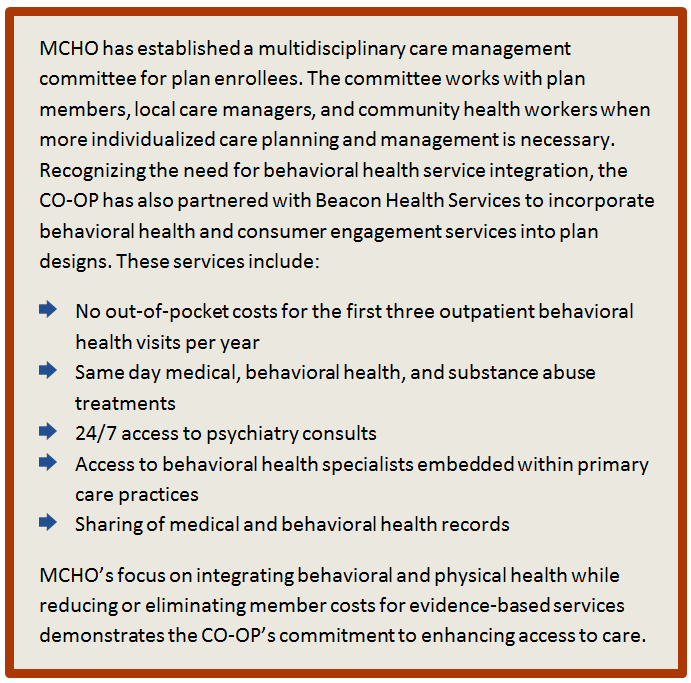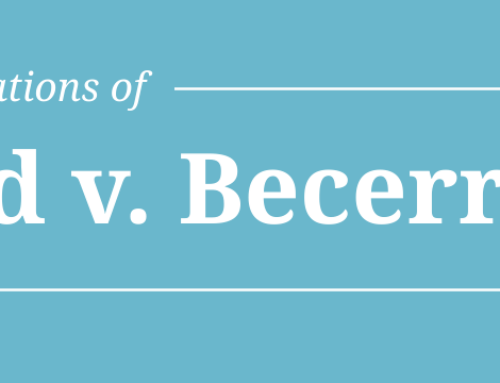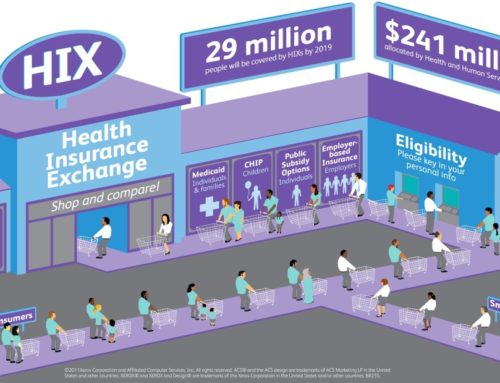Consumer Operated and Oriented Plans: A Potential Role for V-BID Implementation [1]
Originally Produced: January 2014. Updated: July 2016
Introduction
Value-Based Insurance Design (V-BID) aligns consumer incentives with value by reducing barriers to high-value clinical services and providers (“carrots”) and by discouraging the use of low-value services and providers (“sticks”). V-BID is driven by the concept of clinical nuance which recognizes that: 1) medical services differ in the benefit provided; and 2) the clinical benefit derived from a specific service depends on the patient using it, who provides it, and where the service is delivered. V-BID is included in the Affordable Care Act (ACA) and a 2013 CMS rule which permits State Medicaid programs to alter co-payments for provider visits and prescription drugs. Currently, hundreds of public and private organizations utilize V-BID principles to enhance health outcomes and constrain cost growth. This brief offers an overview of Consumer Operated and Oriented Plans (CO-OPs) and how Maine’s CO-OP has successfully implemented V-BID principles to integrate care, improve quality and reduce member costs.
Consumer Operated and Oriented Plans
Consumer Operated and Oriented Plans (CO-OPs) are non-profit health insurance cooperatives designed to provide members with more affordable options for high-quality health insurance. CO-OPs are authorized under Section 1322 of the ACA to offer coverage through the insurance exchanges. Beginning in 2012, the Department of Health and Human Services (HHS) awarded approximately $2 billion in federal loans to CO-OPs in 24 different states.[2]
CO-OP loans have been dispersed to non-profit entities that are demonstrably free of influence from pre-existing insurance companies. CO-OPs are expected to have a substantial amount of business on the individual and small group markets, and are prohibited from being sold to or converting to a for-profit entity.
A Role for V-BID in CO-OPs
CO-OPs formed under the ACA face pressure to enroll enough members through the exchanges in order to become sustainable while confronting the competition of well-established commercial counterparts. To increase their appeal, CO-OPs have emphasized how their existence as consumer-governed, nonprofit insurers creates greater accountability to consumers, providers and payers, while focusing on high-quality, low-cost, patient-centered care. To achieve these quality and cost initiatives, CO-OPs may consider implementing V-BID in their benefit design plan, thereby reducing barriers to high-value services and providers and discouraging the use of low-value services and providers. Savings from these clinically nuanced initiatives could be utilized to lower member premiums and enhance member benefits—a key principle for successful CO-OP infrastructure.
CO-OP Case Study: Maine Community Health Options
On March 23, 2012, HHS awarded a low-interest federal loan of approximately $62 million to Maine Community Health Options (MCHO) to establish and maintain a CO-OP. MCHO strives to design and implement fully integrated delivery systems and patient/provider engagement initiatives to improve health outcomes at lower costs to their members. MCHO’s application was sponsored by the Maine Health Access Foundation, the Maine Primary Care Association (MPCA), and Maine’s Federally Qualified Health Centers (FQHCs). MPCA, commonly referred to as Maine’s health care safety net, is a membership organization representing FQHCs, Indian health centers, and island-based community health centers.[3]
MCHO incorporates V-BID strategies such as reduced or eliminated cost-sharing for high-value services related to chronic conditions such as asthma, diabetes, hypertension, and chronic obstructive pulmonary disease (COPD). Evidence based services used in the routine management of these chronic conditions can include: primary care and specialist office visits; prescription drugs (generic and brand); lab tests; durable medical equipment such as glucometers; and self management classes. In addition, MCHO offers no-cost tobacco cessation interventions, unlimited generic nicotine-replacement therapy, and obesity/weight management support. (Of note, the management of disease related complications is excluded from the reduced or eliminated cost-sharing models.) Incorporating V-BID principles into the MCHO design has allowed the CO-OP to align member benefits with high-value services to create greater access to evidence-based care and achieve savings that can be utilized to lower member premiums over time.
Increasing Use of High Performing Providers
To achieve greater transparency and improve health outcomes, MCHO aims to pair clinical information with claims data to identify provider performance.[4] To track and monitor services utilization and care delivery, the CO-OP has partnered with Valence Health for clinical and financial analytics and Health Dialog for interactive decision aids and healthcare decision-making tools. According to MCHO CEO Kevin Lewis, data related to treatment costs and value of care will be utilized to “support and point our members in the direction of affordable, quality care.”[5]
Overall, clinically nuanced incentives support MCHO’s mission of implementing integrated care and patient/provider engagement initiatives to improve patient-centered outcomes at lower costs to their members.
Conclusion
V-BID implementation within CO-OP designs focuses not only on greater accountability to consumers and payers, but also emphasizes a CO-OP’s mission to provide well-coordinated, high-quality, efficient care. Offering value-driven provider- and consumer-facing strategies that encourage the use of clinically effective care and discourage the use of low-value services can help contain costs, improve enrollee health outcomes, and create a consumer-friendly health insurance option.
References:
- Center for Value-Based Insurance Design. 2014. Consumer Operated & Oriented Plans: A Potential Role for V-BID Implementation. Available: http://vbidcenter.org/wp-content/uploads/2014/10/Co-op-plans-A-potential-roll-for-V-BID-brief-2014.pdf
- Centers for Medicare and Medicaid Coverage. 2012. New Loan Program Helps Create Customer-Driven Non-Profit Health Insurers. February 21, 2012. Available: http://www.cms.gov/CCIIO/Resources/Grants/new-loan-program.html
- Maine Primary Care Association. 2013. About Our Organization. Available: http://mepca.org/about-us/
- McCarthy J. 2013. New nonprofit health insurer seeks better care at less cost. September 16, 2013. Available: http://www.mainebiz.biz/article/20130916/CURRENTEDITION/309129994/new-nonprofit-health-insurer-seeks-better-care-at-less-cost
- Lewis K, Kelley M. 2012. The Emergence and Role of the Consumer Operated and Oriented Plan (CO-OP).







